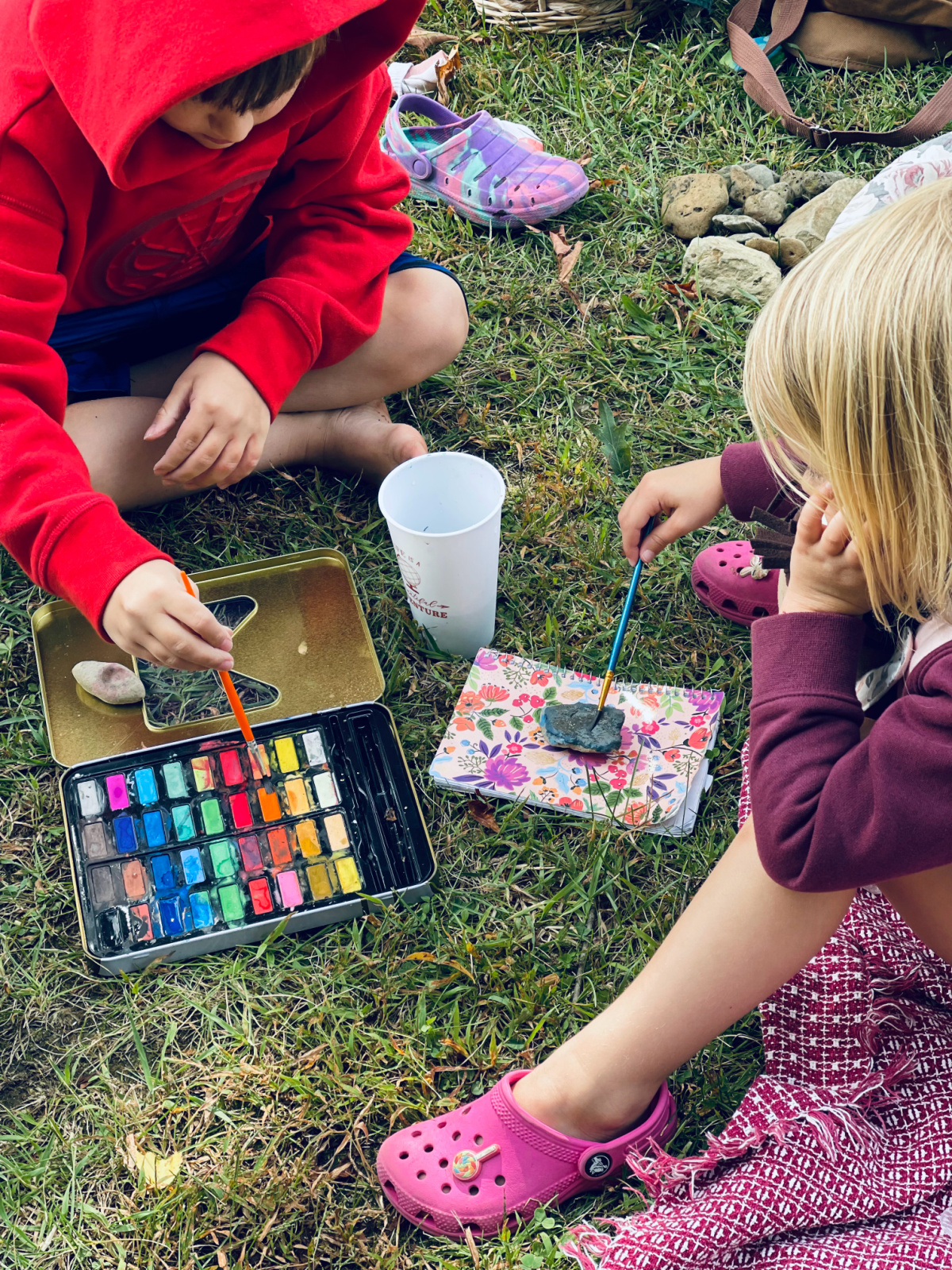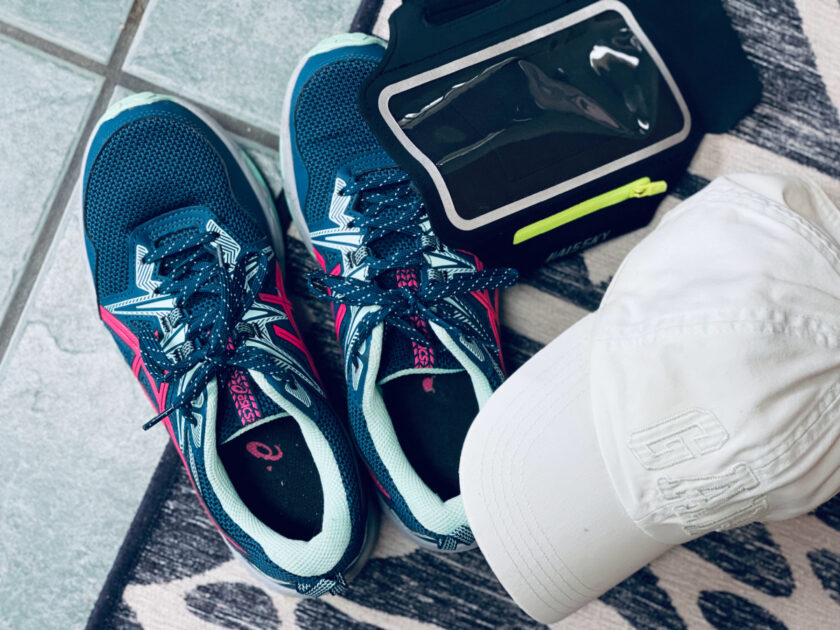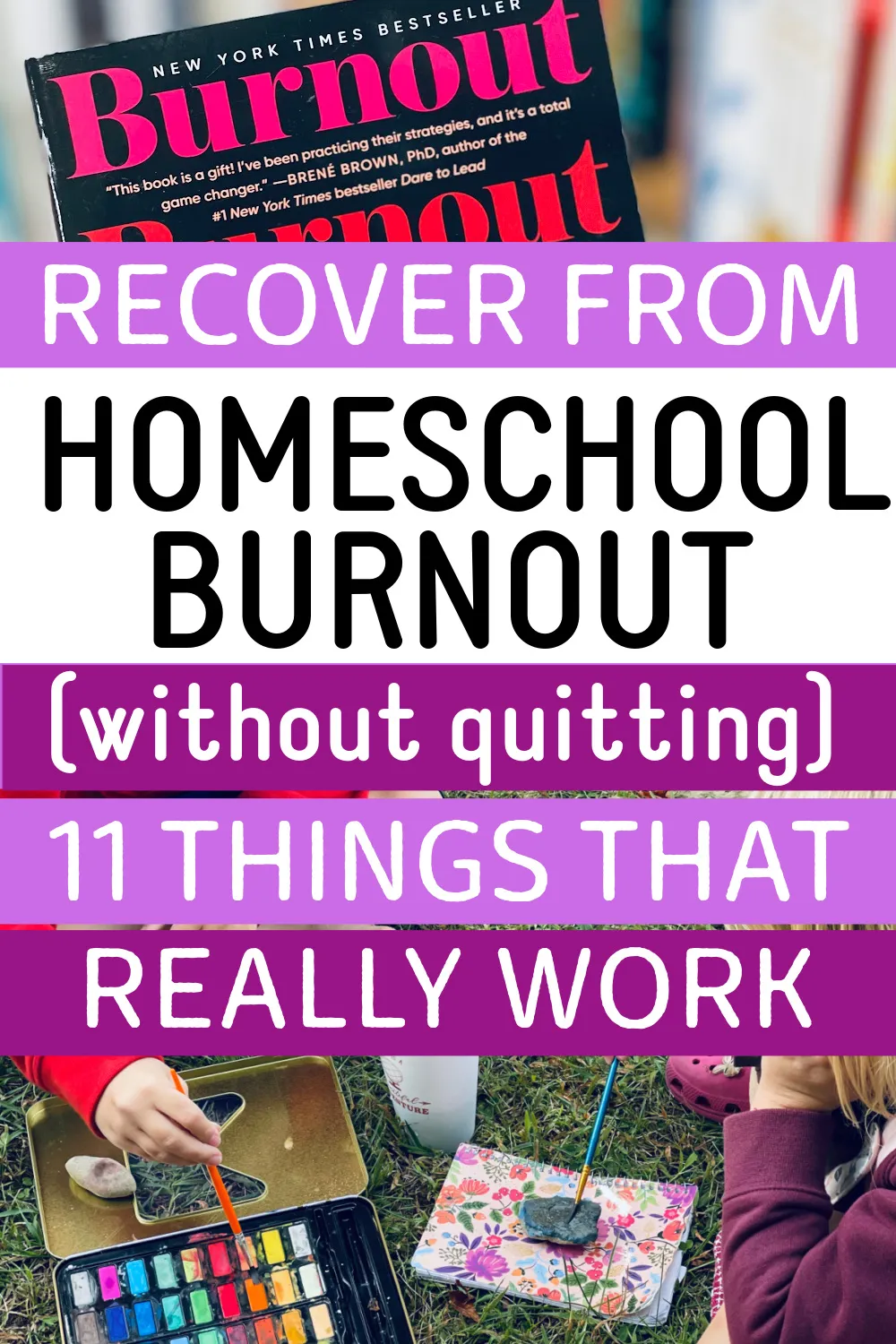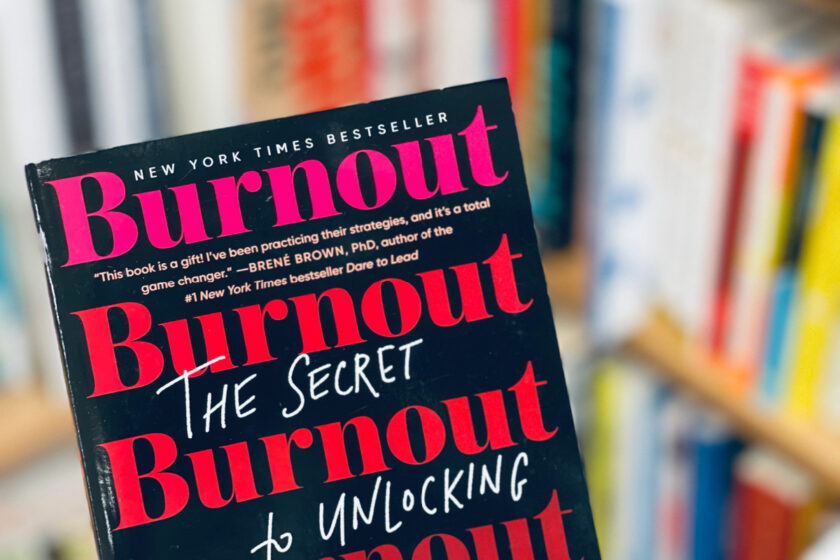Inside: Are you seriously struggling to keep homeschooling right now, and you’re wondering if you could be experiencing homeschool burnout? Learn the top 5 signs of homeschooling burnout, and get 11 tips to help you recover from a mom who’s been there.
I was trying to watch Pride and Prejudice with my almost 14-year-old (the 2005 version, if you must know). We’re working our way through a list of iconic films together.
Or I should say, we’re trying to work our way through them. My 4-year-old has different plans.
Twenty minutes into the movie, she came down and started pulling my arm, BEGGING me to play with her.
She was tenacious, incessant, persistent: all good things…eventually. Right now? All of those fabulous character traits feel insanely frustrating!
I’ve seen the movie a dozen times, but my oldest hasn’t. And if you’ve never tried understanding Jane-Austen-speak with a 4-year-old screaming in the background, well, it’s pretty much impossible.
Was this a case of not giving the 4-year-old enough attention that day? Nope.
I’d taken her out of the house for a 2+ hour playdate with friends, PLUS a fast food eat-in visit (eating in is her favorite thing) AND a grocery store trip 1:1 with me.
Beyond frustrated, my oldest and I turned off the movie and reluctantly agreed to finish the next day – well, to try to finish the next day.
I handed the 4-year-old off to my husband, changed into workout clothes and laced up my shoes for a run.
Because pounding the pavement three days a week, mile after mile? It was like a balm for my soul, a soul that was fighting a serious case of homeschool burnout.
What Causes Homeschool Burnout?
This post probably contains affiliate links, which means I may earn a commission if you make a purchase through those links. As an Amazon Associate, I earn from qualifying purchases. You can find our full disclosure HERE.
That example with my youngest? It’s just one of many plucked from our day-to-day reality.
Three or four out of every five days for the past year have held challenges just like this one. A tug of war between the needs of my youngest and the needs of my older children.
Honestly, I prefer the homeschool activities I can do with my older kids – the books we read, the movies we watch, the games we play, the conversations we have.
Not being able to do those things, needing to divert the majority of my time and energy to my youngest…well, as much as I love her, it was sucking my soul dry.
I looked ahead and couldn’t see a homeschool future where I didn’t feel drained.
Homeschool burnout can be brought on by any number of stressful life events like…
- the birth of a child,
- moving houses,
- the death of a loved one,
- faith crisis,
- strained relationships,
- a life-changing diagnosis, or
- a job loss.
It can also be caused by trying to do too much because you don’t understand or accept our own limitations as the primary homeschooling parent.
For me, it’s been mostly the birth of my last child and trying to raise that child while keeping the same old pace in homeschooling, work and life that has led to burnout.
And this isn’t the first time I’ve been here.
The last time I was grappling with postpartum depression and simultaneously lost my dad unexpectedly. Back then I didn’t have a choice except to keep going because it was the start of the pandemic and everyone was homeschooling.
This time, thankfully, I have more choices.

Top 5 Signs and Symptoms of Homeschooling Burnout
Because I’ve experienced homeschool burnout before, I recognized the symptoms of homeschool burnout early this summer.
Here are the top 5 signs and symptoms…
1. You think about sending your kids to school frequently.
Every single homeschool mom I know threatens school every now and again in a moment of weakness.
But if you’re extremely committed to homeschooling and have been enjoying it for years, and then you find yourself day-dreaming about sending your kids to school every other day, it’s a clear sign that somethings wrong.
This summer, I’ve seriously considered school more than any other time in my homeschooling history, primarily for my youngest.
I actually looked up Pre-K programs in the area, something I’ve never done before.
I’ve spent days trying to convince myself that school isn’t that bad (sure, there’s the school shooting risk, and the banned books, and the compulsory learning and the short lunches and recesses and getting up early and….).
That’s a clear sign that you’re close to – or fully in the middle of – homeschool burnout.
2. Homeschool activities you used to love have become a chore.
Maybe you used to love going to museums. Maybe you loved reading aloud or playing board games.
Maybe teaching math used to be your jam.
Maybe you loved watching documentaries with your kids, or taking them on nature walks.
When you actually have time to do those things, but it feels like you’re dragging your feet to do them? You could be experiencing homeschool burnout.
3. You struggle to get out of bed in the morning because you know you’ll have to homeschool (or in our case, do unschooly things).
I used to get out of bed every morning with gusto. I was excited about my morning coffee and my to-do list.
I loved checking off every single box for our home, my work and our homeschool.
In the middle of burnout, getting out of bed is at best, difficult. At worst, it fills you with dread.
No activity sounds appealing, and you’ve lost that sense of strong homeschool purpose you once had. You no longer look forward to homeschooling.
4. You cry and/or yell at things you used to be able to handle calmly and rationally.
Homeschool burnout reminds me a bit of how I felt when I had postpartum depression.
I used to be able to handle tantrums and sibling fighting without my blood pressure spiking, but when I had postpartum depression? I had to literally step outside when the kids were fighting and/or screaming.
I just couldn’t regulate my own nervous system, and every sound and conflict felt unbearable.
If your fuse is WAY shorter than it used to be, you’re irritable all the time, AND it’s been that way for quite some time, you might be experiencing homeschool burnout.
5. You feel trapped because you’re convinced homeschooling is the best option for your kids, but you feel like you just can’t do it anymore.
This is the worst: when you’re so convinced that homeschooling is the way to go. When you’ve been doing it successfully for years.
When you’ve learned things like American schools are based on the Prussian model of education and are designed to raise obedient worker bees who will jump when the boss says jump.
When you’ve seen the meme comparing public schools and prisons and tend to agree, plus the data showing recess time shrinking until it’s barely even there.
But you’re just so tired. It feels like you’re damned if you send them, damned if you don’t.
That trapped feeling? The inability to see any kind of positive homeschool future? Definitely a sign of homeschooling burnout.
Related: 3 Good Reasons to Quit Homeschooling Guilt-Free

11 Tips for Recovering from Homeschool Burnout (& How to Avoid It In the First Place)
Sending my kids to school wasn’t an option I was ok with. But I knew this wasn’t going to fix itself: I needed a “homeschool burnout recovery plan”.
So if you’re facing homeschool burnout, feel free to borrow my plan.
This is what’s currently helping me to recover from homeschool burnout, and the future already feels brighter.
1. Determine your own unique ways of “completing the stress cycle” – and actually do them.
I read the book Burnout by Emily and Amelia Nagoski last month, and my biggest take away (besides feeling so seen by a self-help book that finally addresses the patriarchy) was learning about how to “complete the stress cycle”.
In modern life, we experience stress at work or from reading a post on social media or from parenting, but not many of us actually relieve that stress.
The stressful feelings might subside eventually, but unless we do something to relieve the stress, it builds up in our bodies over time.
Here are a few ways to complete the stress cycle…
- Physical activity (the most efficient)
- Laughter
- Crying
- Deep breathing
Personally, I decided to start running again.
I stopped this spring and summer because my 4-year-old cried a lot when I left, and it was easier to just walk with her in the stroller. But nothing I’ve tried has given the same stress relief that running has.
My best advice? Find some form of cardio you enjoy and religiously make time for it 3-4 days a week.
Related: A Morning Routine for Moms Who Can’t Get Up Early
2. Set healthy boundaries with your family.
Did you catch that I stopped running because my 4-year-old would cry and hold onto me every time I went for a run?
I let “my old enough to be ok without me” child stop me from doing something I truly needed to do for my own mental health, and something I love.
I was also saying, “Yes,” far too often to other requests, like making food for my older kids who are perfectly capable of making it themselves.
I’ve never been good at boundaries, always feeling guilty saying “no”, even when the other party would be perfectly ok with me saying “no”.
There are times you do need to put your own needs aside, like when you’re navigating those first few weeks with a newborn or in times of true crisis. But outside of those times? Self-care has to be a priority.
Your homeschool will not continue to exist without you: it will crash and burn.
This is one of my biggest issues I’ve had to navigate in the radical unschooling world. It feels like the majority prioritize the primary homeschool parent saying “yes” almost exclusively, without focusing on negotiation and collaboration within the family unit to make sure everyone’s needs are met.
Maybe that’s not a problem if you already knew how to set healthy boundaries coming into parenting and unschooling. I didn’t.
Your needs are important.
Setting boundaries is important. Just do it.
Related: The Pros and Cons of Unschooling – Some Brutal Honesty
3. Establish a Sabbath once a week.
Even though I’ve left organized religion behind, there are good things to hold onto, like the idea of a Sabbath.
On Saturdays, I do my best to only do activities that are restful and restorative for me. I run, read fiction, do puzzles, give myself a manicure and watch TV, with or without my family.
Dinner is always easy or take-out on my “Sabbath”. I don’t clean or do home projects unless it’s something I want to do (I actually love vacuuming our downstairs!).
Choose a day of the week and rearrange whatever you need to rearrange in order to make that day restful.
4. Experiment with stacking and streamlining household tasks.
In order to make a Sabbath happen, I’ve had to experiment with stacking household tasks.
In the past, I would do one big task a day, like cleaning one bathroom.
But for the past couple months, I’ve been cleaning all the bathrooms, sweeping the kitchen floor, watering plants and taking the trash to the dump on Sundays.
By stacking the highest priority tasks on one day, my Sabbath stays a Sabbath and I can focus on homeschool activities, work OR my own self-care the other five days of the week.
This might not work for you, but try experimenting with stacking OR reducing your household tasks to give you more time to recover from homeschool burnout.
You Might Also Like: A Realistic Homeschool Mom Cleaning Schedule
5. Decide which responsibilities can be delegated and which can be dropped entirely.
Make a list of everything on your plate and seriously consider what can be delegated or dropped.
If you’re married, can your partner take over some of your tasks, household or homeschool-related?
Can you outsource getting groceries with grocery delivery? Hire a cleaner once a month?
Can you sign the kids up for outschool classes or find a co-op that doesn’t require parent participation?
Could you reduce certain activities to once a week? For example, we used to play board games daily. Now we only play 1-2 days a week.
We used to read aloud daily, but now it’s more like five days a week.
I know it doesn’t feel like you can drop things, but you can – really. The world won’t stop turning if you don’t sweep the kitchen every night: once a week will do.
Related: The Number That Completely Changed How I Choose Our Read Alouds
6a. If you work, consider cutting back and doing less.
This is not an option for everyone, but I had to accept that it was an option for me.
For the past few years, I’ve tried to convince myself that I could do it all:
- work 25 hours a week (without childcare)
- homeschool five kids
- manage our home
- have time for self-care
As my youngest has gotten older, I know that I can’t. I’ve reduced my work time to 10-15 hours a week – it will have to be enough.
I’ve also had to remind myself yet again to not set goals, especially lofty retirement contribution goals. We are raising five kids during a time of high inflation and massive uncertainty, after all.
There will be a time for working more when my youngest is older.
If you can reduce your work responsibilities by even a few hours a week to give yourself more breathing room to recover from homeschool burnout, do it.
6b. If you don’t work, consider the personal and financial impact of that choice.
Given 6a, you might be scratching your head and thinking, say what?! it’s complicated, I know.
But sometimes, living paycheck to paycheck and sacrificing financially to homeschool takes a toll on your mental health, especially if you’ve been doing it for years. Living on one income is becoming more challenging, and honestly, I don’t know how families manage it in the U.S..
Strained finances can sometimes cause you to resent your choice to homeschool. It leaves a lot less wiggle room for things like eating out or babysitting or therapy or homeschool activities for the kids that take the pressure off of you (hence the potential resentment).
If strained finances are contributing to your homeschool burnout, you might need to consider the opposite of cutting back.
Consider adding IN some part-time work to give yourself time away from your kids AND financial breathing room.
Depending on the work, you might also discover a sense of accomplishment that has nothing to do with your kids and their homeschool outcomes.
And that can be really healthy and good for your soul.
Related: How to Work from Home and Homeschool – 10 Practical Tips
7. Give yourself a deadline.
Even if you’re dead set against sending your kids to school, giving yourself a timeline can help because it gives you a specific amount of time to get better.
Personally, I decided if my homeschooling burnout hasn’t gotten markedly better by the time my youngest is ready for first grade and she’s still asking to go to school (she asks about it periodically), I’ll send just her to give myself a break.
While my youngest is the most likely to at least try school at some point in the future, I doubt she’ll go in first grade.
But just giving myself permission to consider it at a specific time in the future lifted some of the mental weight almost immediately, which made room for creative problem-solving on how to make homeschooling work for the next few years.
It’s extremely difficult to problem-solve or think creatively when you’re burned out.
8. Evaluate how much you can realistically do in the homeschool “sphere”, outsource what you can and decide that it’s enough for now.
I used to advise homeschool parents to turn to unschooling when they were burned out. Now I know that you can burn out even when you’re unschooling.
With unschooling, you might be even more likely to burn out because you can potentially be “on” around the clock. There isn’t the same natural “off” time that traditional homeschooling parents have.
You could help a child with a passion project at 8 p.m., for instance.
Or you could initiate with your child all day long right up until bedtime: documentaries/films, reading aloud, experiments, playing board games, going to this or that activity (and when they’re young, they might just take you up on all of it).
When you unschool, you have to decide for yourself how much to initiate, when you won’t be available to help with things.
Of course, if you’re homeschooling and burning out with all of the curriculum, definitely consider transitioning to unschooling or taking time off.
Get outside a lot, attend homeschool groups which take the pressure off of you, find classes if your kids want them and let them explore their interests (yes, sometimes that means more – or a lot more – screentime).
Overall, decide how much you can give during this period of burnout and tell yourself it’s enough.
Related: What Is Unschooling? Defining a Misunderstood Homeschool Style
9. Remind yourself of public school’s limitations and stresses.
When you’re burned out, it’s easy to imagine that life with kids in school will be less stressful.
But as much as public school parents rejoice when September hits and they have peace and quiet during the day, I know they have other stressors like…
- Homework
- Drop-off/pick-off
- Bullying
- Grades
- School Lunches
- Post-School Melt-downs
- Bedtime Pressure
- Safety Concerns
I could go on, but I need to remind myself regularly that it’s not all sunshine and roses on the other side. There are just as many stressors, just different ones.
You get to choose your hard, and after looking at this list, I remember why I chose homeschooling, and why I want to continue to choose it.
10. Go back to your homeschool “whys”.
I had to dig back into my homeschool “whys” A LOT the past few months.
Homeschool burn-out makes everything fuzzy. You forget exactly why you signed up for this in the first place.
I re-read my own posts on “Why Homeschool” and “Homeschool Benefits for Kids”.
But my deepest “why”, the thing that won’t let me send my kids to school, is my children’s freedom. I’m devoted to it: freedom for their minds, freedom for their bodies, freedom to be kids while they’re still kids.
That’s what motivates me to recover from homeschool burnout without sending my kids to school if they don’t want to go.
11. Explore and address any underlying physical or mental health conditions.
A lot of the symptoms of homeschool burnout overlap with certain mental health conditions like depression and anxiety.
Since weaning my youngest, I’ve struggled a lot with both of those things, but cyclically. I’ve always had generalized anxiety, but I’m pretty sure I also have PMDD (it’s like PMS on steroids).
Once I started paying close attention to my cycle, I realized it’s during the second half l think most about quitting homeschooling. I remind myself that I don’t feel this way during the first half of my cycle.
I’ve also had to be very intentional about exercise, not going on social media, getting a LOT more sleep (I’m an 8-9 hours kind of person) and more in order to stay healthy mentally.
Explore whether you might have health concerns that are contributing to homeschool burnout.

You Can Recover From Homeschool Burnout Without Sending Your Kids to School
If you’re deep in the middle of homeschool burnout right now, I know the darkness you’re facing. I know you want to keep going, but you don’t think you can.
And if you need to send your kids to school for a little while (or a longer while) to recover, do what you need to do. It’s ok to quit homeschooling – for one year, or for forever.
Again, there is no homeschool without you: you’re kind of a big deal.
But if you want to recover without sending your kids to school, I want you to know that this plan, doing all of the things I’ve shared here, has been working for me.
I’ve been intentionally working on recovery for three months now, and I already feel way more positive about our homeschool future than I was in the spring.
I’m remembering why I said yes to this lifestyle almost a decade ago. And why I want to keep saying yes in the years to come.
If you’re going to do this homeschooling thing for more than a decade, expect burnout to hit at one point or another.
And when it does, this homeschool burnout recovery game plan will be here waiting for you.
Read Next: Unschooling Ideas for 2023-2024 (8th, 6th, 4th, 1st and Pre-K)


